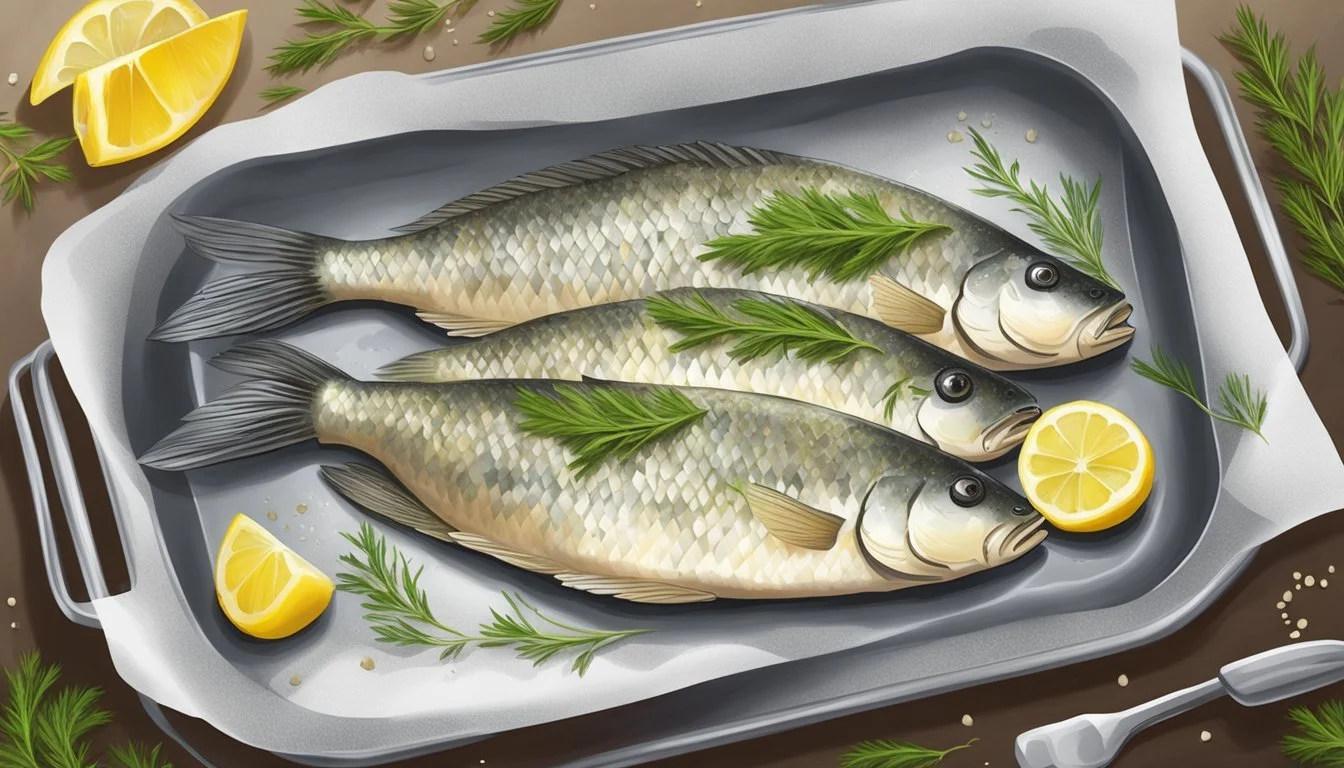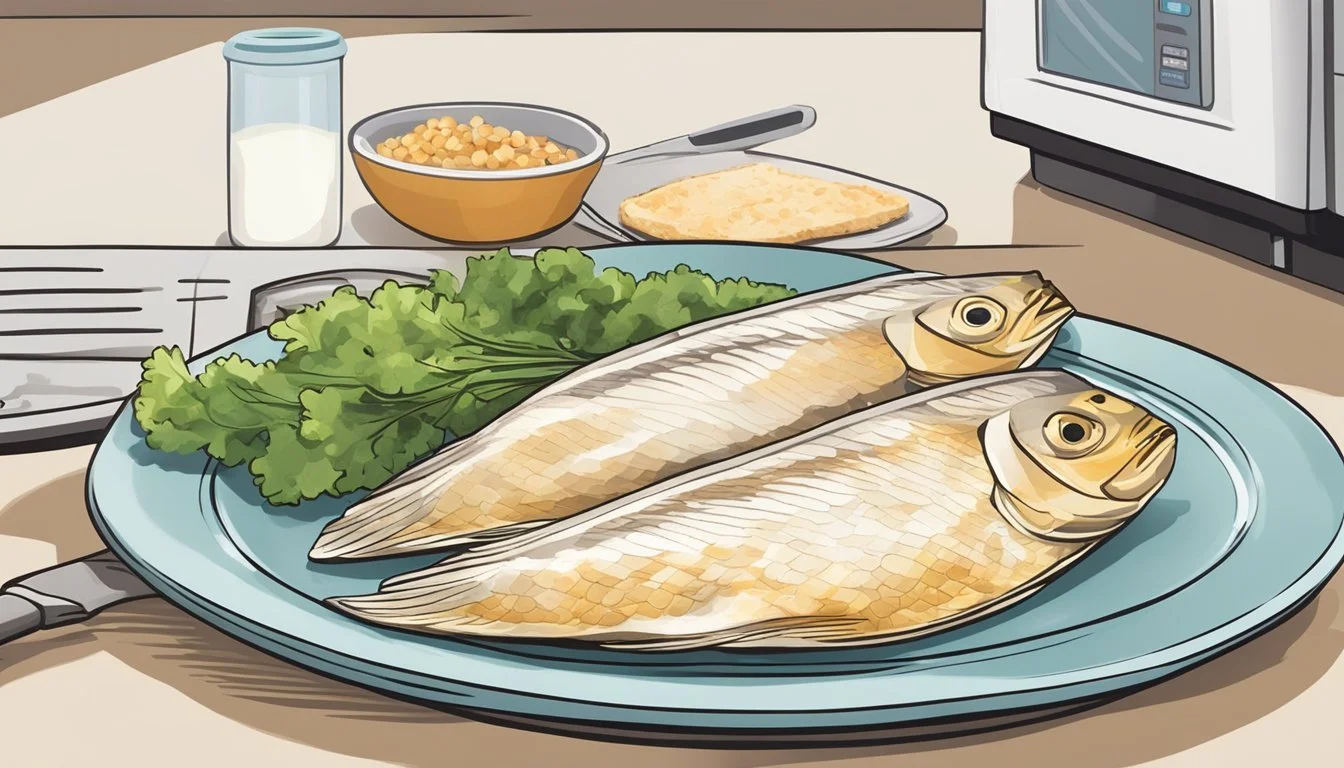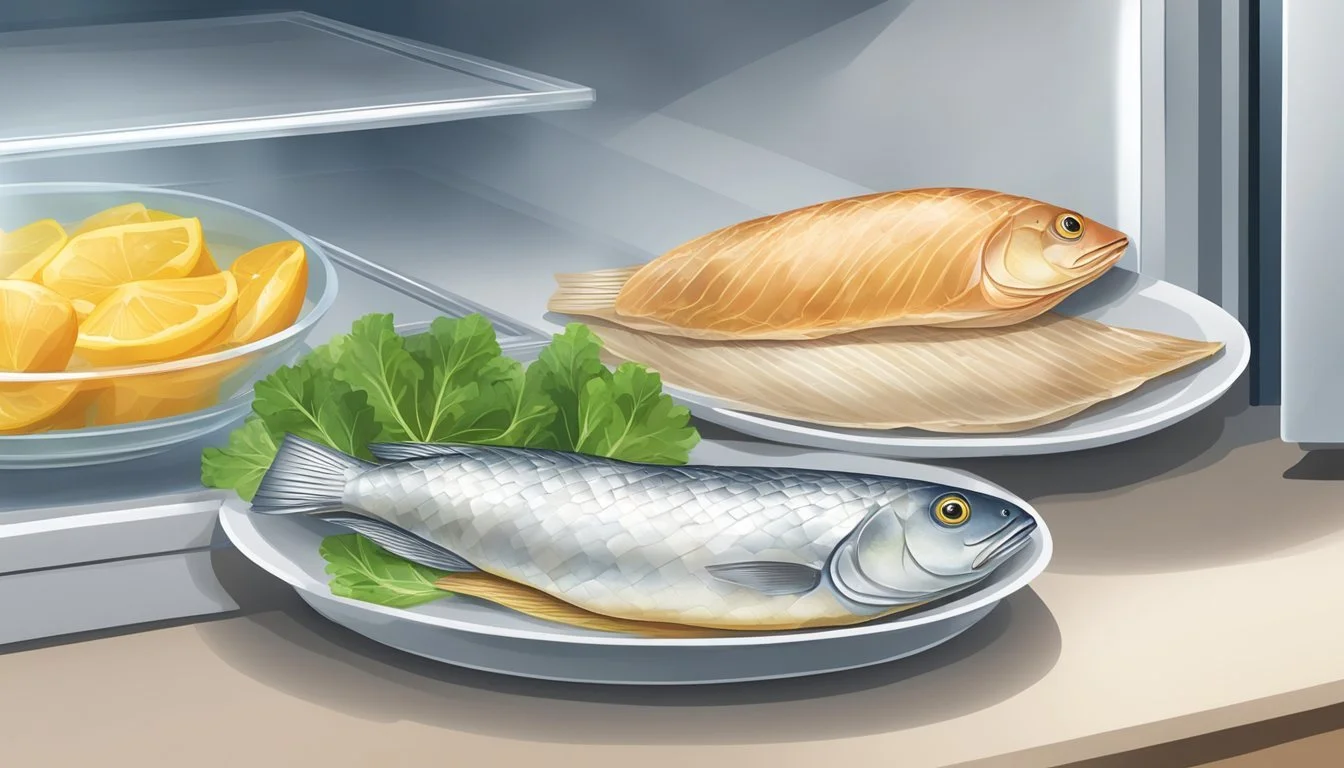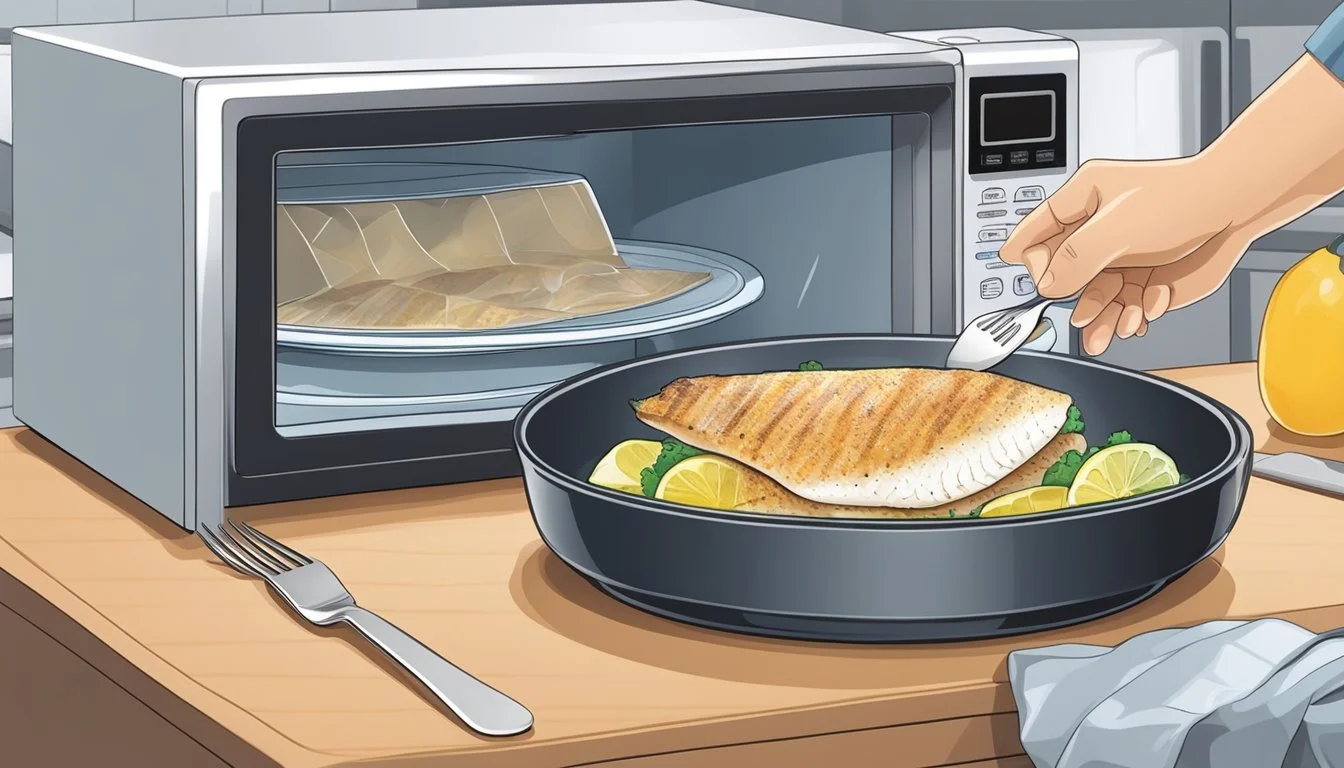How to Reheat Gluten-Free Tilapia Fillets
Simple and Effective Methods
Reheating gluten-free tilapia fillets doesn't have to be a daunting task. Many people struggle with maintaining the delicate texture and flavor of this healthy fish when reheating, but with a few simple steps, you can enjoy a delicious meal just as good as when it was first cooked. For the best results, preheat your oven to 350°F (175°C) and ensure the tilapia fillets are thoroughly thawed if previously frozen.
Tilapia is a versatile fish that pairs well with various seasonings, making it a favorite choice for health-conscious eaters. When reheating, using an oven-safe dish lightly coated with cooking spray or oil can help keep the fillets moist and flavorful. Wrapping the fillets in aluminum foil can also retain moisture and prevent them from drying out.
Achieving the perfect reheated tilapia requires attention to detail. Simple methods, such as marinating the fillets before initially cooking or using gluten-free breadcrumbs for a quick crust, can enhance the dish's flavor even after reheating. The key to success is a gentle reheating process that preserves the fish's tender texture and gluten-free integrity.
Health Benefits of Gluten-Free Tilapia
Gluten-free tilapia provides a range of health benefits, encompassing robust nutritional content, valuable protein and fat composition, and an abundance of essential vitamins and minerals.
Nutritional Profile
Tilapia is known for its lean meat and is naturally low in fat and carbohydrates, making it an excellent choice for those maintaining a gluten-free and low-carb diet. It is a rich source of protein, offering around 23 grams per 100-gram serving.
The fish is also low in calories, typically containing about 96 calories per serving. These characteristics make it a healthful option for weight management and for those seeking to reduce their intake of unhealthy fats and carbs.
Protein and Fat Content
Tilapia’s high protein content is a significant benefit, providing the body with essential amino acids needed for muscle repair and growth. With approximately 23 grams of protein per 100 grams, it supports bodily functions and helps maintain muscle mass.
Furthermore, tilapia contains beneficial fatty acids. While it is low in saturated fats, it provides omega-3 fatty acids, promoting heart health and reducing inflammation. The minimal fat content, combined with its protein levels, makes tilapia an excellent component of a balanced diet.
Vitamins and Minerals
Tilapia is packed with a variety of essential vitamins and minerals. It is a good source of vitamin B12, important for nerve function and red blood cell production. Vitamin D in tilapia supports bone health and immune function.
The fish also contains calcium, which is crucial for maintaining strong bones, and iron, vital for oxygen transport and preventing anemia. Small amounts of vitamin A and vitamin C support vision and skin health, and boost the immune system, respectively.
Overall, the combination of these vitamins and minerals underscores the nutritional value of tilapia, making it a wholesome gluten-free dietary option.
Understanding Gluten-Free Cooking
When cooking gluten-free, it is crucial to ensure that every ingredient conforms to gluten-free standards to maintain dietary restrictions and promote health. This requires careful selection and preparation of ingredients to avoid contamination.
Importance of Gluten-Free Diet
A gluten-free diet is essential for individuals with celiac disease, gluten sensitivity, or wheat allergies. Consuming gluten can cause significant health issues for these individuals, including digestive problems and nutrient deficiencies.
Adopting a gluten-free diet helps alleviate symptoms and maintain digestive health. It also prevents the risk of long-term complications, such as osteoporosis and anemia, by ensuring that the body can properly absorb nutrients.
Selecting Gluten-Free Ingredients
Choosing the right ingredients is vital for successful gluten-free cooking. Look for certified gluten-free labels on processed foods, as this guarantees that the product has been tested for gluten contamination.
Whole foods, such as fruits, vegetables, and lean proteins, are naturally gluten-free and are excellent choices. Additionally, fiber-rich options like brown rice, quinoa, and gluten-free oats help maintain a balanced diet.
Always avoid cross-contamination by thoroughly cleaning utensils and surfaces. Use separate cooking tools and storage containers to prevent gluten-containing foods from coming into contact with gluten-free items.
Preparation of Tilapia Fillets
Proper preparation of tilapia fillets is crucial for achieving a flavorful and pleasant eating experience. This involves selecting the right type of tilapia, ensuring it is thawed correctly if frozen, and enhancing its taste through marinades.
Choosing Fresh or Frozen Tilapia
When preparing tilapia, it's important to decide between fresh or frozen fillets. Fresh tilapia offers an excellent taste and texture but might be less accessible depending on your location. It’s ideal to purchase from a reputable source to ensure its freshness and quality.
Frozen tilapia, on the other hand, can be a convenient option. These fillets are often flash-frozen at the peak of freshness, retaining their flavor and nutritional value. When choosing frozen tilapia, look for packages that are free of ice crystals and avoid any that show signs of freezer burn.
Thawing Frozen Tilapia
Thawing frozen tilapia correctly is essential to preserve its texture and flavor. The safest method involves placing the frozen fillets in the refrigerator for several hours or overnight. This slow thawing process helps in maintaining the integrity of the fish.
For a quicker method, you can place the frozen tilapia in a sealed plastic bag and submerge it in cold water. Change the water every 30 minutes until thawed. Avoid using hot water or leaving the fish at room temperature, as this can lead to uneven thawing and potential bacterial growth.
Marinating for Flavor Enhancement
Marinating tilapia fillets can significantly elevate their flavor profile. A simple marinade can include ingredients such as lemon juice, olive oil, garlic, and herbs like parsley or dill. These ingredients help in tenderizing the fish while infusing it with delicious flavors.
Mix the marinade ingredients in a bowl and place the fillets in a shallow dish. Pour the marinade over the tilapia fillets, ensuring they are well-coated. Cover and refrigerate for at least 30 minutes to allow the flavors to penetrate. For stronger flavors, marinate for up to a few hours, but avoid over-marinating as the acid in the marinade can break down the fish's texture.
Proper Seasoning Techniques
To ensure the best flavor when reheating gluten-free tilapia fillets, it's crucial to use the right seasoning techniques. This involves creating custom seasoning mixes and appropriately using garlic and onion powder.
DIY Seasoning Mix
Crafting your own seasoning mix provides control over ingredients and flavors. Start with a base of salt and black pepper, then add paprika for a gentle smokiness. A pinch of lemon juice can add acidity and freshness, enhancing the fish's natural taste.
Here's a simple mix:
1 tsp salt
1/2 tsp black pepper
1/2 tsp paprika
1 tbsp lemon juice
Mix these together and coat the tilapia fillets evenly. This blend not only brings out the fillet's flavors but also complements its texture without overwhelming it.
Using Garlic and Onion Powder
Garlic powder and onion powder are essential for adding depth and complexity. Use them in moderation to avoid overpowering the delicate flavor of tilapia. A recommended ratio is:
1 tsp garlic powder
1 tsp onion powder
These powders provide a subtle, savory foundation. Sprinkle them evenly over both sides of the fillets. For a balanced taste, combine with a touch of salt and pepper. Optionally, add a hint of paprika for color and a slight kick.
When using garlic and onion powder, ensure they are evenly distributed to maintain consistency in flavor throughout the fillet.
Gluten-Free Breading Options
To achieve a crispy coating on gluten-free tilapia fillets, consider different breading mixtures and the choice between homemade versus store-bought options. Both methods offer unique benefits that can yield a delicious, crunchy texture.
Creating a Crispy Coating
For a gluten-free crispy coating, panko breadcrumbs are an excellent option. Gluten-free panko typically provides a light and airy texture, perfect for air frying. Combine with spices such as paprika, garlic powder, and pepper for enhanced flavor.
Cornstarch also works well. Coat the fillets in cornstarch before dipping them in an egg wash and then into gluten-free breadcrumbs. This ensures the coating adheres well and turns golden when cooked.
Other alternatives include rice flour or almond flour, both of which offer a crunchy texture when fried or air-fried. Parmesan cheese can be mixed with gluten-free breadcrumbs to add extra crispiness and flavor.
Homemade versus Store-Bought Options
Homemade gluten-free breading offers complete control over ingredients and customization. Mix your preferred gluten-free flour, such as rice, almond, or chickpea, with seasonings like Italian herbs, paprika, and garlic powder.
Store-bought options provide convenience. Brands like 4C Gluten-Free and Aleia’s Gluten-Free offer pre-made gluten-free breadcrumbs. These products ensure consistency and save preparation time, ideal for those in a hurry.
Some store-bought options also come pre-seasoned, making them perfect for quick meals. Ensure the packaging states gluten-free, especially if you have an allergy or severe sensitivity. Whether homemade or store-bought, both options can yield a tasty, crispy coating for tilapia fillets.
Reheating Techniques for Tilapia
Ensuring tilapia retains its moist, tender, and flaky texture while reheating can be achieved through various methods such as using an air fryer or oven. Each method has specific steps and considerations to maintain optimal results.
Using an Air Fryer
The air fryer is a convenient option for reheating tilapia fillets while keeping them crispy. Preheat the air fryer to 350°F (175°C). Lightly coat the basket with cooking spray to prevent sticking. Place the tilapia fillets in the basket without overlapping them. Cook for 3-4 minutes, checking the internal temperature to ensure it reaches 145°F (63°C). This method helps keep the fish tender and flaky.
Oven Method
Reheating tilapia in the oven is ideal for maintaining its moist texture. Preheat the oven to 350°F (175°C). Place the fillets on an oven-safe dish lined with foil or parchment paper. Cover the dish to prevent drying out. Reheat for 10-12 minutes until the internal temperature reaches 145°F (63°C). For a crispy finish, uncover the fillets for the last 2-3 minutes of reheating.
Maintaining Moisture and Texture
Maintaining moisture and texture involves a few extra steps. Adding a tablespoon of water or broth to the dish before reheating can help preserve moisture. Using an oil spray or butter on the fillets adds flavor and prevents drying. Monitoring the internal temperature closely is crucial; once it hits 145°F (63°C), the tilapia is ready to serve, ensuring it remains moist and tender.
Serving Reheated Tilapia
When serving reheated tilapia, it's essential to pair it with appropriate accompaniments to enhance flavor. Proper presentation can elevate the dining experience, making a simple dish appear gourmet.
Accompaniment Options
Tilapia's mild flavor pairs well with a variety of side dishes. Steamed vegetables such as broccoli, carrots, and green beans provide a nutritious, colorful complement. Roasted potatoes or mashed potatoes offer a hearty, satisfying side.
A fresh salad with mixed greens, cherry tomatoes, and a light vinaigrette enhances the dish's freshness and adds a crisp texture. For those seeking a more robust option, rice pilaf or quinoa can be excellent choices, each adding a different texture and flavor to the meal.
Proper Presentation
Presentation matters, even with reheated foods. Begin by placing the fillet at the center of the plate. Arrange the accompaniments around the fish to create a balanced, visually appealing plate.
Drizzle a light sauce, such as lemon butter or herb-infused olive oil, over the tilapia for added flavor and moisture. Garnish with a slice of lemon or a sprinkle of fresh herbs like parsley or dill.
Using colorful vegetables and arranging them neatly enhances the visual appeal. A clean, uncluttered plate with contrasting colors and textures will make the reheated tilapia look just as appetizing as a freshly cooked meal.
Storing Leftover Tilapia
Proper storage of leftover tilapia is important to maintain its texture, flavor, and safety. Key considerations include refrigeration methods for short-term storage and freezing techniques for long-term preservation.
Refrigeration Guidelines
Leftover tilapia should be stored in the refrigerator if it will be consumed within a few days. It is best to place the tilapia in an airtight container to prevent moisture loss and contamination. Ideally, the refrigerator should be set to 40°F (4°C) or below to ensure safety.
Label the container with the date it was stored to keep track of how fresh it is. Tilapia stored in the refrigerator should be consumed within 3-4 days to maintain optimal quality. Any fish that appears off in color, smells unpleasant, or has an unusual texture should be discarded to avoid foodborne illnesses.
Freezing for Long-Term Storage
For longer storage, tilapia can be frozen. Start by arranging the fillets on a baking sheet lined with parchment paper, ensuring they do not touch each other. Freeze the fillets until they are solid, which usually takes a few hours.
Once frozen, transfer the tilapia to a freezer-safe bag or airtight container. Removing as much air as possible from the bag helps prevent freezer burn. Label the bag with the storage date and type of fish. Properly stored in the freezer at 0°F (-18°C) or below, tilapia can last up to 3 months.
When ready to use, thaw the frozen fillets in the refrigerator overnight. Avoid thawing fish at room temperature or in hot water to reduce the risk of bacteria growth.
Safety Tips and Best Practices
When reheating gluten-free tilapia fillets, ensuring safety and maintaining quality is crucial. Key practices include monitoring cooking temperatures and avoiding cross-contamination.
Monitoring Cooking Temperatures
Using a thermometer is essential for confirming that the tilapia fillets reach a safe internal temperature. Reheat the fish to an internal temperature of 145°F (63°C) to eliminate any harmful bacteria.
Consistency in cooking time helps prevent the fillets from drying out. For oven reheating, preheat to 350°F (175°C) and cook the tilapia for about 10-15 minutes. For microwaves, heat in short intervals of 30 seconds, checking frequently with a thermometer to ensure it does not overcook or undercook.
Regularly verify the calibration of your thermometer for accurate readings. A reliable thermometer can avert potential foodborne illnesses by confirming the fish is thoroughly cooked.
Avoiding Cross-Contamination
Prevent cross-contamination by thoroughly cleaning all surfaces and utensils. Use separate cutting boards for gluten-free tilapia and any other food items to avoid gluten exposure.
Label any storage containers used for gluten-free fish to avoid mix-ups in the refrigerator or freezer. Before handling the fillets, wash hands thoroughly with soap and water to remove any traces of gluten.
Be mindful of cookware. Use separate, clearly marked pans and utensils designated for gluten-free foods only. This simple practice ensures that the reheated tilapia remains safe for individuals with gluten sensitivities or celiac disease.
Answering Common Queries
For those looking to reheat gluten-free tilapia, it's essential to address both cooking challenges and dietary concerns to ensure a successful and nutritious meal.
Gluten-Free Cooking Challenges
Cooking gluten-free tilapia can present unique challenges. One common issue is preventing cross-contamination with gluten-containing foods. Use separate utensils and surfaces dedicated to gluten-free cooking.
Reheating methods can vary. Oven reheating at 350°F ensures even heating and avoids sogginess. For crispier results, an air fryer at 400°F can be a good option. Both maintain the texture and taste of tilapia.
Nutrition and Diet Concerns
Tilapia is a low-calorie, high-protein fish. Each fillet typically contains around 100 calories and 20 grams of protein. Tilapia is also low in sodium and sugar, making it a suitable option for various diets.
Reheating should not significantly affect the nutritional value. However, avoid adding high-calorie sauces or breading. Instead, consider fresh herbs and spices for added flavor without extra calories.
Proper reheating can maintain the nutritional benefits, offering a healthy meal option.









